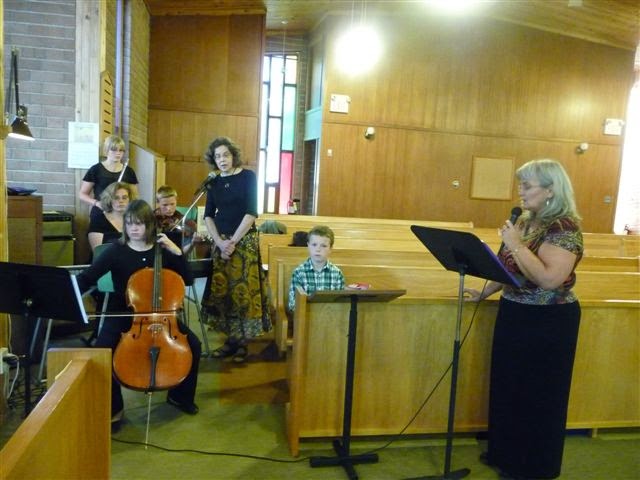Just the tiniest little thing: Jesus Christ, lying in the manger. Those who have ever held in their arms a newborn baby, will know how delicate they are. Without a word, this fragile creature tells us to be careful with him. His neck is weak, and his head must be supported. Your attention rivets on the miniature eyelids, mouth, and nose.
One of the reasons I believe in God – the proper, Triune, Catholic God – is His way with paradox. This strikes me as true to my own experience of the universe we currently occupy, which is full to busting with scale reversals.
Were Christ, indeed, the Author of this universe, I would expect Him to show the same “sense of humor” – by which of course I don’t mean, “telling jokes.” Or perhaps, there are jokes far beyond laughter.
This begins with the magnitude of the heavens: the normal human perception of distance to the stars, and to the stars beyond the stars beyond them. (It is a myth that any of our ancestors thought they were close. Regardless of their cosmological schemes, all men have known that the stars are very far away, and that they speak of immensity.)
But at the other end is a sub-atomic scale. It seems to parody the large, in smallness. There are distinct specks within specks, and specks within those, down to “force carriers” and “flavors.” We find the Singularity where, if physics has any coherency at all, we have reached the interface with “nothing.”
That is to say, there cannot be smaller, in any material scheme for small, for the same reason that the universe cannot be larger. At least, not as we have found it to be. We could run the abstract numbers up and up, or down and down – but in either case we come to that hard, material Singularity. Go any farther in either direction, and we’re not in this universe any more.
So where are we on this scale?
Man, standing around one fathom tall, is right in the middle, midway between the “nothing” and the “everything.” In the numbers we’ve been able to compile, our position is rather spookily at the intersection of all roads.
As we’ve come to learn, mostly in the quite recent past, the strangeness is insupportably great, for the universe itself is “tuned” to many dozen – perhaps many hundred, perhaps many more – precise settings of physical “law” or constants. Adjust the dial ever so slightly – adjust so slightly any one of those dials – and the very possibility of Man is obviated.
Of course, the observation is tautological, but even in that we see God’s hand: that He left us with the freedom to see, or refuse to see, what is dead obvious.
In a limited, merely scientific way, since 1931 at the latest, the existence of “God” has been irrefutable. That was the year in which the finitude of the universe was established beyond reasonable doubt: that it had an origin, at a calculable “first moment” in time; that it has from that a calculable size; and what has a beginning must have an end. (See: Georges Lemaître.)
And towards the end of that last century, in the later 1990s, the chief hint was provided to calculate that end. For not only can we now know the universe is expanding, but also that it expands at a constantly accelerating rate. We must reach a point where the universe itself comes up against the good old speed of light: and once again, a Singularity. (See:Accelerating universe.)
A small thing, perhaps, as that ingenious Belgian physicist, Monsignor Lemaître, once had to explain to his pope, who was on the verge of announcing that the Catholic cosmology had been scientifically proved. For as the good priest said, it is just science, which rattles about from day to day. The part that takes us from two plus two, to four, will always have to be supplied by Faith.
Science only shows what’s there, not the meaning of it. Yet the nature of the universe remains plain to see, whether on the grand cosmic scale, or in little biological facts, provided to our senses directly. The acorn and the oak are one, from never before, to never after. Whether through telescope, or microscope, we see the same in a glass, darkly.
Modern man can look at the large, and he can look at the small. There is nothing wrong with God-given eyes, should we wish to use them; nor in the blind, with the mind’s eye. Nothing has ever been concealed from a man, that the man needed to know. But oh, he is willful.
What modern man has trouble seeing, is the large in the small, and the small in the large. Our ignorance – which can be stupefying, compared with ignorance in ages past – fastens upon one thing at a time, with ever-diminishing attention spans. In effect, we have lost the ability to see and think at the same time.
And to this modern mind, as to others past in the habit of missing the point, the whole idea of God presented in this swaddled bundle of human flesh, is nonsense. God, should He turn out to “exist,” must be infinitely large; this baby is way too small.
A real God would take anything He wanted; this baby missed out on the inn.
A real God would be all-seeing; this baby sleeps in Mary’s arms.
A real God would arrive with angelic armies; this baby lacks even a security guard. . . .
We could construct a litany like this, of ways in which Jesus Christ was not very plausible. Even to many ancients, as we know, the whole idea of Him came as something of a little joke. Surely the Christians could not be serious.
Imagine their surprise when, paradoxically, that little baby conquered their world.









